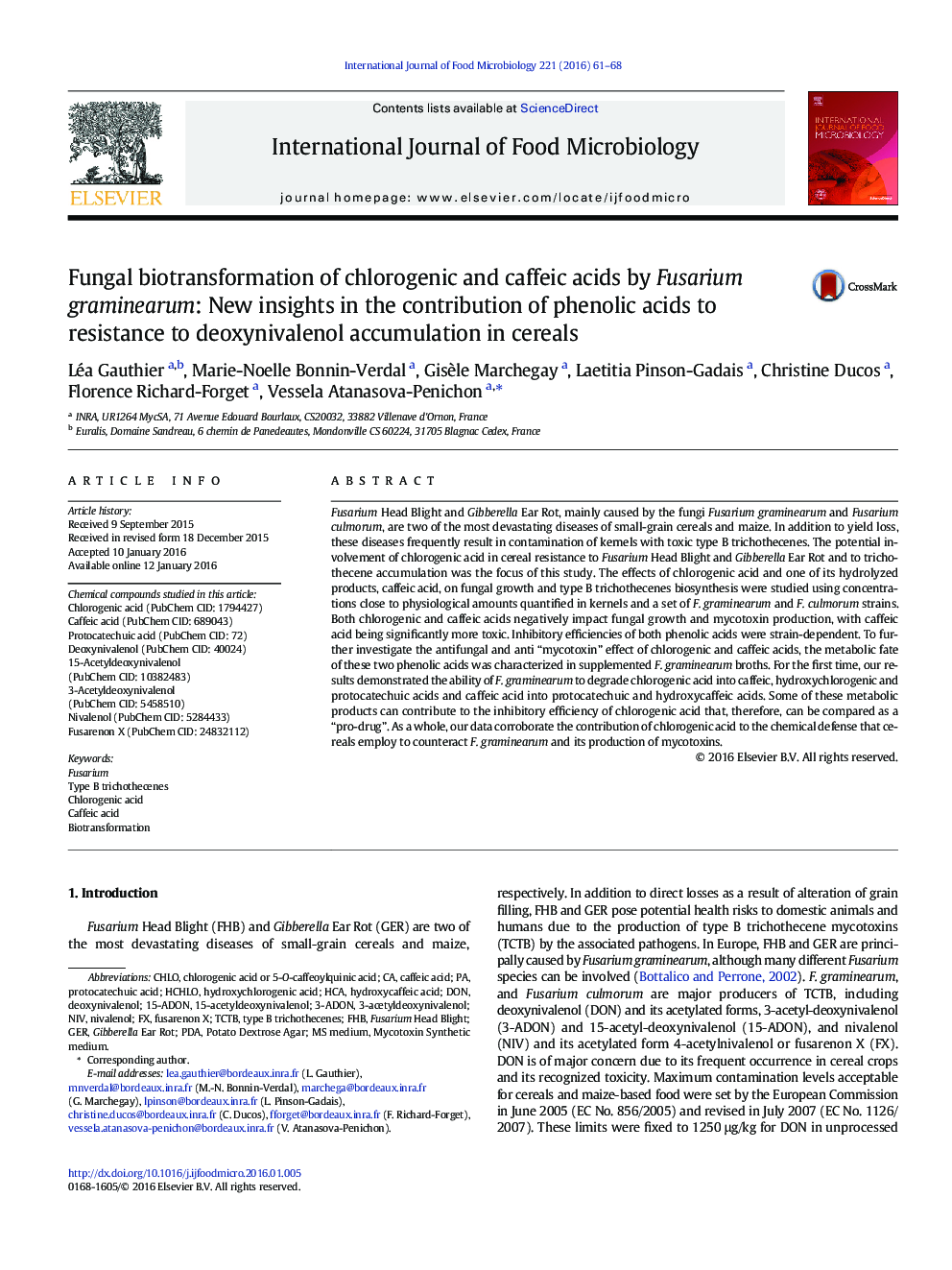| کد مقاله | کد نشریه | سال انتشار | مقاله انگلیسی | نسخه تمام متن |
|---|---|---|---|---|
| 6289810 | 1616562 | 2016 | 8 صفحه PDF | دانلود رایگان |

- Chorogenic and caffeic acid can significantly reduce the growth of Fusarium and TCTB production.
- Compared to chlorogenic acid, caffeic acid is a more toxic compound against TCTB-producing fungi.
- F. graminearum biotransforms chlorogenic acid into caffeic, hydroxychlorogenic and protocatechuic acids.
- Our data support the contribution of chlorogenic acid to cereal resistance to F. graminearum and TCTB accumulation.
Fusarium Head Blight and Gibberella Ear Rot, mainly caused by the fungi Fusarium graminearum and Fusarium culmorum, are two of the most devastating diseases of small-grain cereals and maize. In addition to yield loss, these diseases frequently result in contamination of kernels with toxic type B trichothecenes. The potential involvement of chlorogenic acid in cereal resistance to Fusarium Head Blight and Gibberella Ear Rot and to trichothecene accumulation was the focus of this study. The effects of chlorogenic acid and one of its hydrolyzed products, caffeic acid, on fungal growth and type B trichothecenes biosynthesis were studied using concentrations close to physiological amounts quantified in kernels and a set of F. graminearum and F. culmorum strains. Both chlorogenic and caffeic acids negatively impact fungal growth and mycotoxin production, with caffeic acid being significantly more toxic. Inhibitory efficiencies of both phenolic acids were strain-dependent. To further investigate the antifungal and anti “mycotoxin” effect of chlorogenic and caffeic acids, the metabolic fate of these two phenolic acids was characterized in supplemented F. graminearum broths. For the first time, our results demonstrated the ability of F. graminearum to degrade chlorogenic acid into caffeic, hydroxychlorogenic and protocatechuic acids and caffeic acid into protocatechuic and hydroxycaffeic acids. Some of these metabolic products can contribute to the inhibitory efficiency of chlorogenic acid that, therefore, can be compared as a “pro-drug”. As a whole, our data corroborate the contribution of chlorogenic acid to the chemical defense that cereals employ to counteract F. graminearum and its production of mycotoxins.
Journal: International Journal of Food Microbiology - Volume 221, 16 March 2016, Pages 61-68